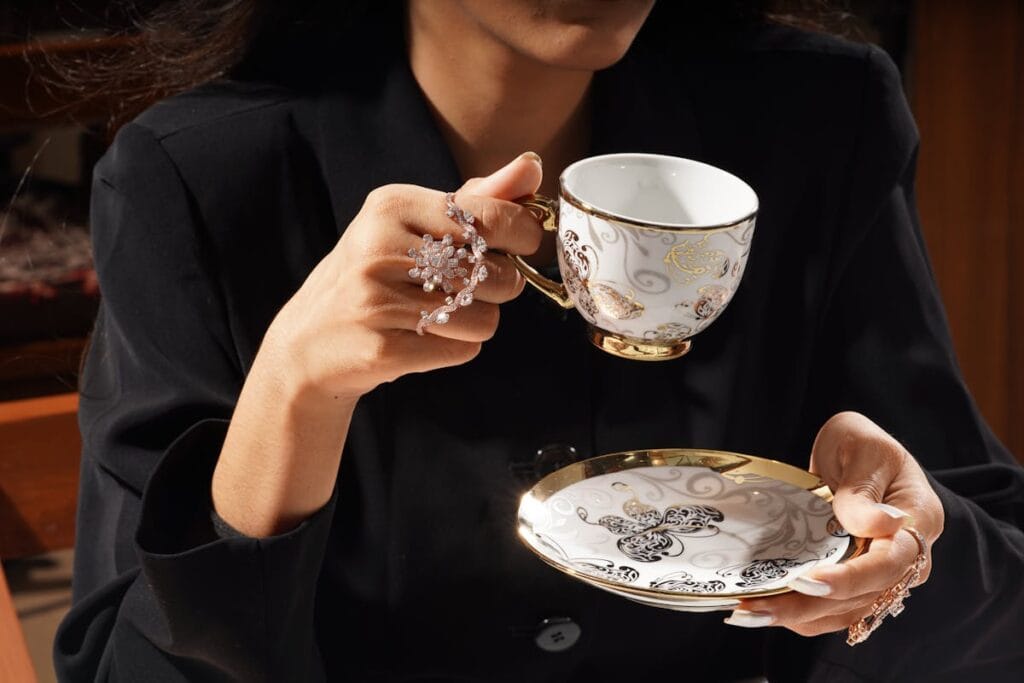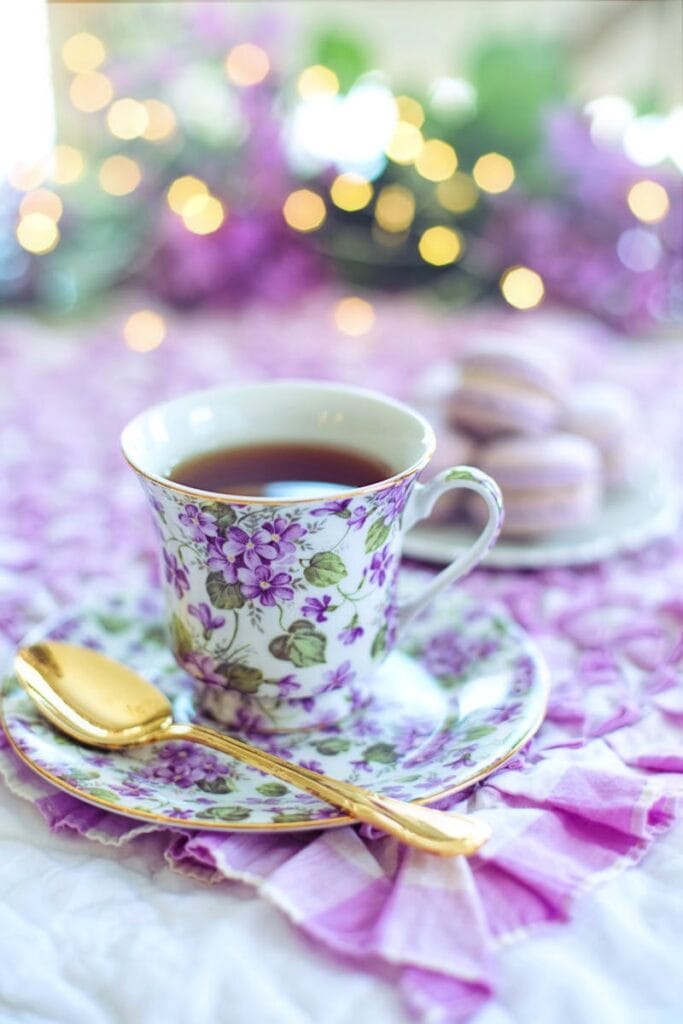Beyond Earl Gray- What Afternoon Tea Really Says About British Culture
Afternoon Tea is one of the most enduring symbols of British life: timeless, comforting, a little formal perhaps but always infused with the quiet beauty of pause, conversation and kindness. We go beyond Earl Gray to find out what it really says about the British culture.

To an outsider, Afternoon Tea might look like a quaint little tradition, all fine china, neat sandwiches and tiny cakes. But Afternoon Tea holds something deeper about British culture itself. Afternoon Tea isn’t just about what’s on the table; it’s about everything unsaid around it.

It’s often said that you can tell a great deal about a nation by how it drinks its tea. And nowhere is that truer than in Britain, where afternoon tea is not just a drink, but a ritual, a social code, a moment of grace and order in an unpredictable world. Afternoon Tea remains one of Britain’s greatest treasures — a tradition rooted in history, yet always ready to welcome a new generation to the table.
Interestingly, one of the earliest glimpses into how different this British ritual was from tea-drinking elsewhere comes not from a grand London hotel — but from the private diary of Queen Victoria’s daughter.
On 15th August 1845, while staying with Queen Elizabeth of Prussia, the young Princess Victoria wrote in her journal with a mixture of curiosity and faint surprise:
“We went down to what is called the Painted Room & had tea, quite in the German way. We Princesses sat down to a table, on which there was no cloth, & excellent cakes of all kinds were served, whilst the Queen’s Ladies made the tea.”
It was a scene that clearly struck her, not for its lack of beauty or hospitality, but because it wasn’t quite right by British standards. No cloth on the table. The Queen’s ladies bustling about, making the tea themselves. Cakes, yes, but absent was the ceremony, the precision, the almost theatrical sense of occasion that was already taking hold in Britain.
This little entry says everything about why Afternoon Tea became such a British institution. For the British, tea was never simply about the drink or even the food. It was about creating a moment, deliberate, ordered, elegant. A white cloth on the table. A set order of sandwiches, scones and cakes. The ritual of pouring tea properly, often by the hostess herself, as a gesture of both care and status.
Across Europe, tea was enjoyed, of course, in parlours, salons and family kitchens. But only in Britain did it transform into a national art form.
What Afternoon Tea Really Says About British Culture

That quiet observation by Princess Victoria captures the cultural heartbeat of Afternoon Tea — this was never just about taste, but about time, tradition and the uniquely British love of doing things just so. It is no wonder that, in the years that followed, Afternoon Tea would become
one of the most enduring symbols of British life, timeless, comforting, a little formal perhaps, but always infused with the quiet beauty of pause, conversation and kindness. And all, of course, with a perfectly laid cloth.
The Art of Holding Back
British culture has always prized understatement. Afternoon Tea mirrors that perfectly. It’s not loud, it’s not grand, it’s not rushed. The food is delicate. The conversation is light. Even the portions , just enough, never too much, reflect a culture that values restraint over excess.
This is a country that often says less to mean more. A place where humour is dry and the weather is wet, emotions are managed with discretion and moments of joy arrive in subtle, carefully prepared rituals, like a warm scone shared at four o’clock.
Kindness as Medicine
Afternoon Tea might appear formal, even old-fashioned, but it’s rooted in connection. British culture places enormous value on social harmony. Tea is the great equaliser. It’s how the British soften bad news, celebrate good news, or recover from life’s dramas.
“Shall I put the kettle on?” isn’t just a question. It’s an offering of comfort, peace and solidarity, the British version of a warm hug without any awkward physical contact.
Tradition Brings Progress
Interestingly, Afternoon Tea also captures something else about Britain: the country’s curious ability to be both deeply traditional and quietly progressive. Today, Afternoon Tea appears in every possible version: vegan, gluten-free, themed, international, playful. It has adapted without losing its soul. That balance between honouring the past and evolving with the present is deeply British.
The Love of Ritual
British culture understands the power of small rituals. In a world obsessed with speed, Afternoon Tea invites people to slow down. It doesn’t demand attention, it creates it. There is time to sit, to talk, to pause between bites and to refill the teapot without rush. Afternoon Tea isn’t loud or showy but it is meaningful. Just like the best British humour. Just like the best British people.
Afternoon Tea: A True British Institution
There are few traditions as timeless or as unmistakably British as Afternoon Tea. It is more than just a meal; it is a ritual, a moment of pause and a beautifully preserved glimpse into the very heart of British culture.
Its story begins almost 200 years ago with Anna Russell, the seventh Duchess of Bedford. Living in a grand era when dinner was often served fashionably late, the Duchess found herself facing what every modern woman knows too well — that long, hungry stretch between lunch and supper. Her solution was simple, yet inspired. She began inviting friends to join her in the afternoon for tea, delicate sandwiches, scones layered with jam and cream, and small, elegant cakes.
What began as a private pause for refreshment quickly captured the imagination of the British aristocracy. Afternoon Tea soon became a social ritual — a graceful, unhurried moment of conversation and connection, made even more enjoyable by its sense of occasion.
Two centuries later, the essence of the Duchess’s idea has hardly changed. The classic menu — finger sandwiches, warm scones, rich clotted cream, preserves, and fine teas like Darjeeling and Earl Grey — remains firmly at the heart of every Afternoon Tea, from the grand salons of London’s finest hotels to the prettiest tearooms tucked away in quiet villages.
But what makes Afternoon Tea truly special isn’t just the food. It’s the atmosphere. The attention to detail. The sense of stepping out of the everyday and into a small world where everything slows down. It is elegance without hurry, indulgence without excess.
For locals, it’s a beloved tradition. For visitors, it’s an essential part of the British experience. And for everyone, it’s a reminder that sometimes the most enduring pleasures are found not in grand gestures, but in simple rituals, shared slowly, with care.
In the End, It’s Not About Tea
The real heart of Afternoon Tea lies in its quiet generosity. It’s about making time for others. About turning a simple break in the day into something memorable. Is a chance to create space for conversation, connection and a little softness in a world that can feel anything but. Afternoon Tea is Britain itself: calm on the surface, thoughtful underneath, full of unspoken warmth — and always, always better with company.
Do you want to share your story and inspire our readers ? Know that YOUR EXPERTISE is paving the way for a fairer, happier society.



